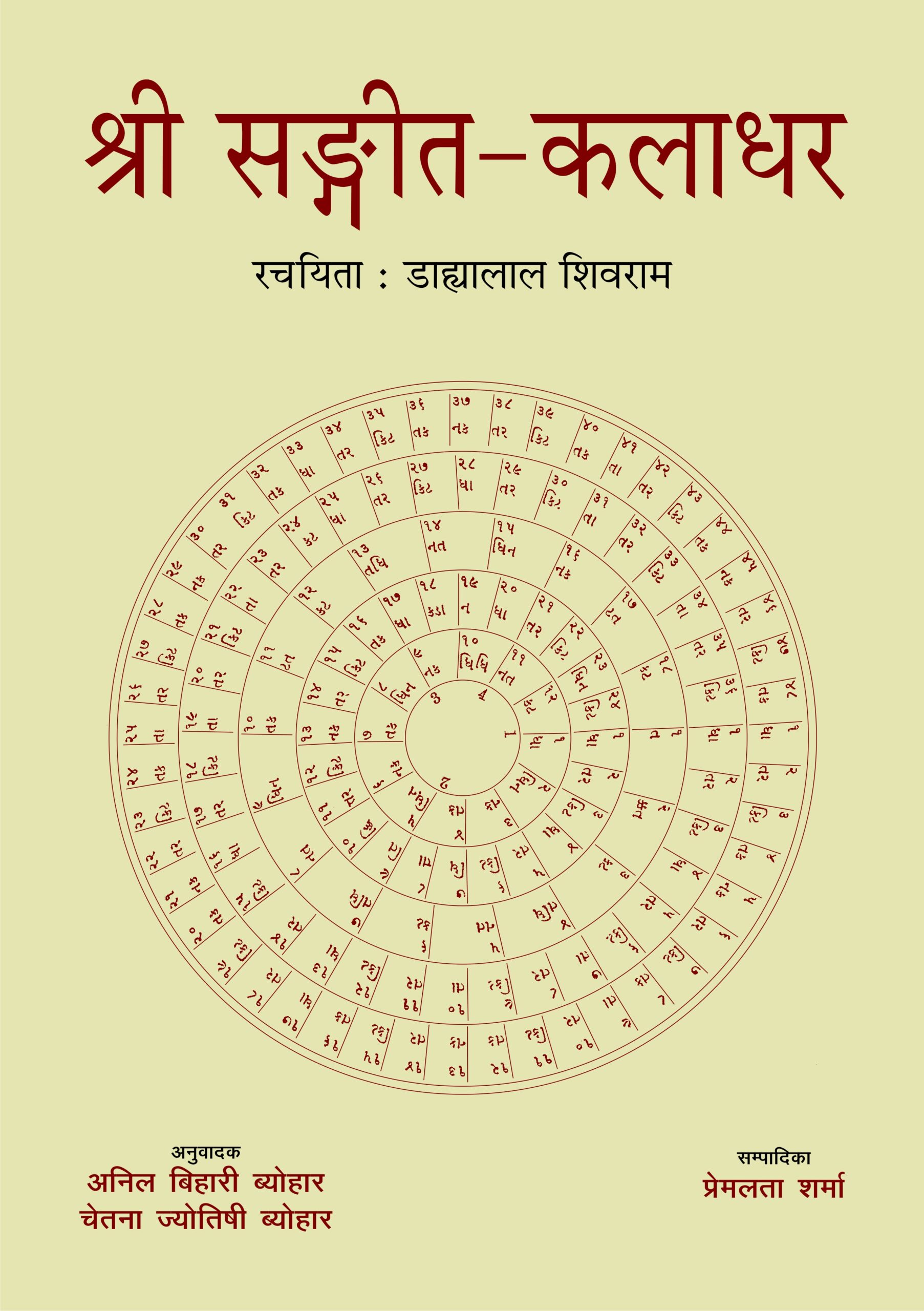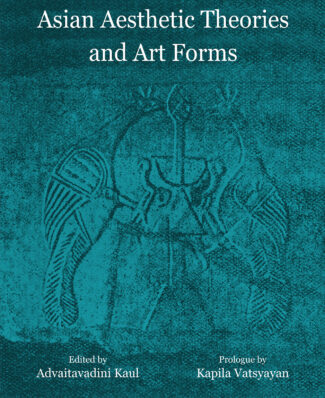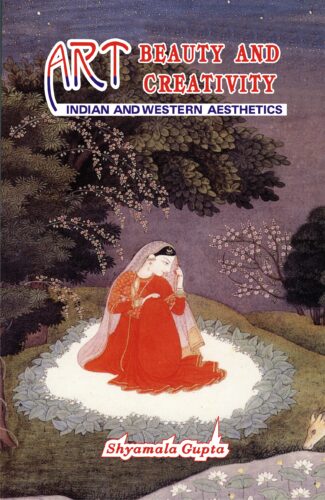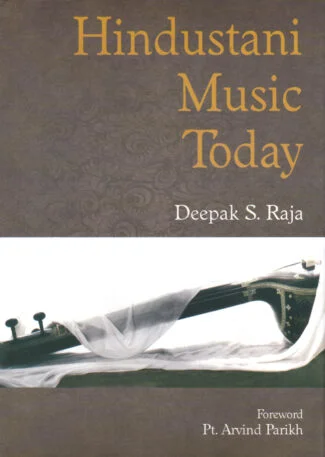

Shri Sangita Kaladha...
Shri Sangita Kaladhara; by Dahyalala Shivarama; Hindi translation by Bihari Byohara and Chetna Jyotisha Byohara
by: Dahyalal Shivram , Anil Bihari Byohar , Chetana Jyotish Byohar , Prem Lata SharmaThis book was written by an unusual royal court poet of Bhavanagar (Gujarat) between 1885 and 1900. It benefits those readers, music lovers and singers who are interested in having knowledge of our ancient musicology. This book tries to project the style and suras prevalent from ancient to the modern times, and is a very useful guide for the music critics.
₹1,250.00 Original price was: ₹1,250.00.₹1,125.00Current price is: ₹1,125.00.
ISBN: 9788124603635
Year Of Publication: 2006
Edition: 1st
Pages : xlii, 546
Language : Hindi
Binding : Hardcover
Publisher: D.K. Printworld Pvt. Ltd.
Size: 29 cm.
Weight: 2300
This book was written by an unusual royal court poet of Bhavanagar (Gujarat) between 1885 and 1900. It benefits those readers, music lovers and singers who are interested in having knowledge of our ancient musicology. This book tries to project the style and suras prevalent from ancient to the modern times, and is a very useful guide for the music critics.
- Sale!Hindustani Sangeet: Some Perspectives Some Performers by: Sushil Kumar Saxena
₹600.00Original price was: ₹600.00.₹540.00Current price is: ₹540.00.There are three major ways of looking at Hindustani sangeet. An easy-to-follow discussion of its basic concepts is one. A truthful and sympathetic, yet not merely laudatory, account of the life and art of some of its masterly exponents is another. Both these approaches have been fairly common so far. The third way, which has not yet received the attention it deserves, tries to dwell upon Hindustani music, rhythm, and (Kathak) dance explicitly in relation to philosophy and philosophers of art. It is from this point of view that the present book should be welcome. It does not, however, overlook the first two approaches. Besides quite a few essays that explore the aesthetical aspects of Hindustani music, the book takes a renovative look at Kathak dance, and engages the reader in a discussion of how far our music can be regarded as spiritual. These and some other key features should make this book acceptable to both rasikas and musicologists.
- Sale!Asian Aesthetic Theories and Art Forms by: Advaitavadini Kaul
₹3,800.00Original price was: ₹3,800.00.₹3,420.00Current price is: ₹3,420.00.The centuries-old exchange of ideas, knowledge systems, resources, skills and materials among the people of the Asian continent left a lasting legacy in various spheres of human experience. This was a dialogue that involved rich exchange of religious, literary, aesthetic and artistic ideas and forms across the regions of Asia. The general impressions of an art, which is spiritual and magical in character, highly charged with literary myths and legends, and presented through a seemingly improvised styles in various art forms, provide us with a clue of an understanding of the fundamental foundations of the arts in Asia.
This volume contains the papers of the panel on ‘Asian Aesthetic Theories and Art Forms’ in first two sections. This panel was a part of the international conference on “Asian Encounters: Networks of Cultural Interaction” held in New Delhi. The volume reaffirms that the Indian theory of art as a creative process and creative expression is broadly true for entire Asian theory of art and aesthetics and it opens up a pan-Asian theory of art and aesthetics.
‘Representation of Asian Art in Asian Museums’ was another panel of the conference. The volume contains three papers from that panel also and the transcript of the dialogue held on ‘Cross Cultural Frontiers in the Study of the Past’. - Sale!Art, Beauty and Creativity by: Shyamala Gupta
₹1,650.00Original price was: ₹1,650.00.₹1,485.00Current price is: ₹1,485.00.When the 18th century German philosopher, A.G. Baumgarten first introduced Aesthetics as an academic discipline to deal with the philosophy of beauty, he couldnt possibly have anticipated the controversies that have lately been raised by logical positivists, analytical schools, and even linguists -controversies questioning the validity, the very legitimacy, of a philosophical inquiry into beauty, art and creative processes. Notwithstanding the relatively more recent usage of the term proper, Aesthetics has a millennia-long history: beginning, in the West, with the old-world Greek philosophers, like Pythagoras, Plato, and Aristotle; and, in India, with the Vedic writings, more specifically, Bharata. Dr. Shyamala Guptas book is indisputably a painstaking effort trying to chart the historical progression of aesthetics: both Indian and Western -with focus not only on its evolutionary landmarks, but on its important concepts and theories as well. Schematically structured into two parts, Part 1 of the book examines the status of Indian aesthetics: its theories of rasa and dhvani, and, besides these, of its world- view of art. In its Part 2 are traced the development ofWestern theories of art and beauty, together with their attendant issues appearing, from time to time: from the days of ancient Greek philosophers to contemporary thinkers. Additionally, the authoress also tries to show how art is positioned vis-a-vis morality, science, sport and culture. A comprehensive, meticulously updated perspective on aesthetics, the book is sure to interest anyone concerned with the discipline: whether as a specialist, a student or a general reader.
- Sale!Hindustani Music Today by: Deepak S. Raja
₹600.00Original price was: ₹600.00.₹540.00Current price is: ₹540.00.Stating that Hindustani music should be rightly termed Art music and not classical music, the book begins by discussing the features of Art music and presents an approach to appreciating Hindustani music. It provides a detailed understanding of the components of the raga experience in Hindustani music, including their time theory and the role of Gharanas of the musical tradition.
It deals with genres of raga-based vocal music which have been performed over the last five centuries: Dhrupad, which has its moorings in devotional music; Khayal vocalism shaped by Sufi influences; the thumree, which originated as an accompaniment to the Kathak dance; and the tappa, adapted from the songs of camel drivers in the north-west frontier. It takes up the use of instruments in Hindustani music, especially the Rudra Veena, Sitar, Surbahar, Sarod, Santoor, the Shehnai, Pakhawaj, the Hawaiian Guitar and many others, giving an account of their origin, performing styles and lineages relating to them.
Throughout, the emphasis is on contemporary trends in Hindustani music and its prospects in the future. It mentions the significant practitioners of Hindustani music, both vocal and instrumental.
The volume will interest lovers of Indian music and also scholars who want to have a greater understanding of its traditions, its contemporary appeal and trends in practice. - Sale!Rasa in Aesthetics by: Priyadarshi Patnaik
₹990.00Original price was: ₹990.00.₹891.00Current price is: ₹891.00.The Indian tradition of criticism is over two millennia old. And its rasa theory has, from the beginning, essentially influenced authors, connoisseurs and art critics alike. First expounded sometime between the 1st century bc and the fourth century AD in the eminent aesthetician, Bharata’s Natya Shastra, rasa theory deals with the ‘emotive content’ of a work of art — how it is depicted, inferred and transmitted. Dr. Patnaik’s book is a unique effort that demonstrates, with diverse examples, the universality of this ancient theory and its applicability to modern Western classics. Elucidating afresh the concept of rasa and all its nine primary kinds largely on the basis of Natya Shastra of Bharata and the commentaries of the tenth-century aesthetician, Abhinavagupta, the book investigates the validity of rasa theory as an aesthetic, more specifically, a literary theory, and how its canons are applicable to modern Western literature as well as Chinese love lyrics and Japanese haiku poems. Dr. Patnaik’s transcultural exploration, thus, covers all major genres of literature — poetry, drama and fiction; and also major writers — Lawrence, Mayakovsky, Kafka, Camus, Conrad, Hemingway, Faulkner, Marquez, Eliot, Hesse, O’Neill, Ionesco, Beckett, Lorca, Neruda and several others. In emphasizing the universal validity of the rasa theory, the author considers certain modern problems relevant to text, meaning and readers’/audiences’ response as well. Very few are the examples of applied rasa theory even in Sanskrit and other Indian literatures, leave alone its application to Western creative writing. This book, with its bold framework and lucid style, should, therefore, fascinate the scholars of Indology, Indian aesthetics and, above all, comparative literary criticism.






